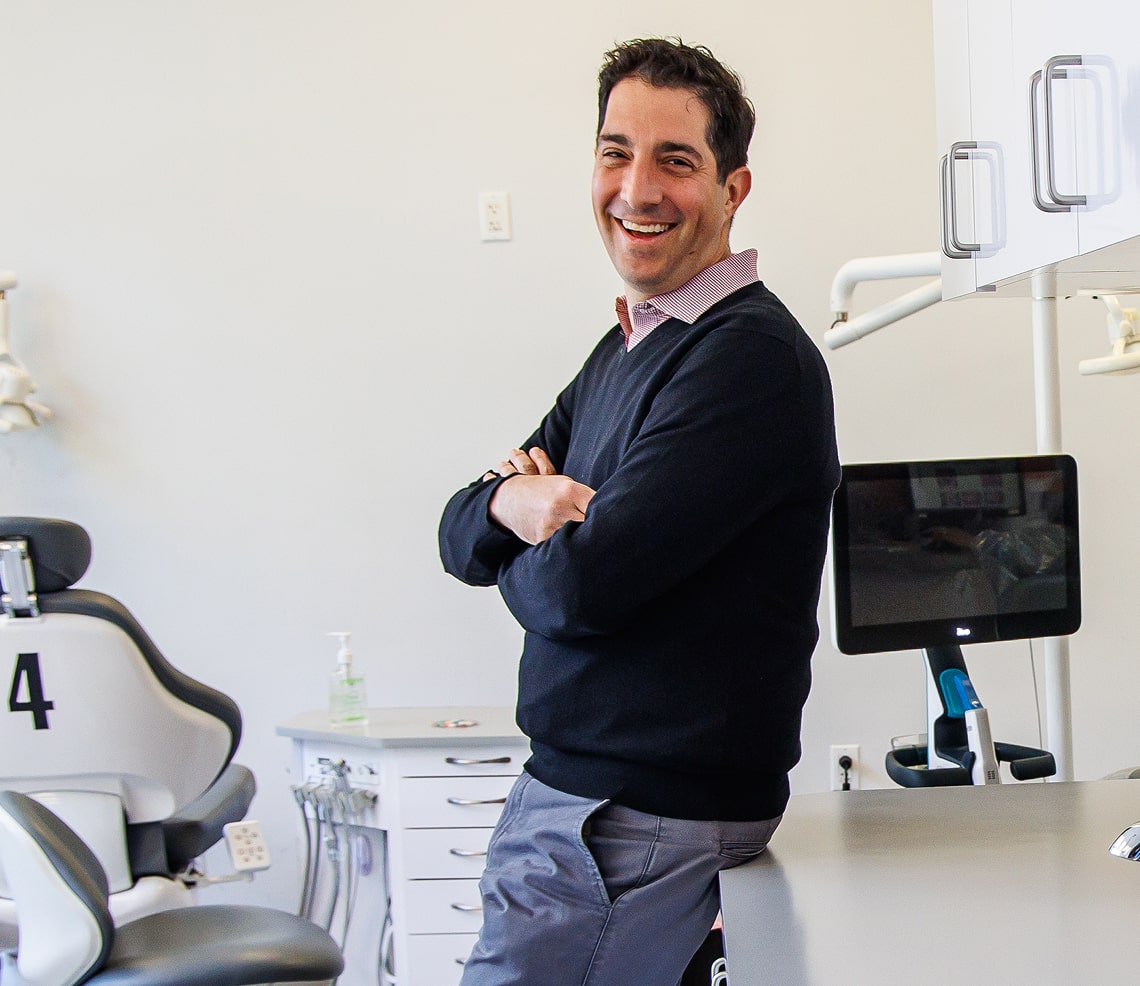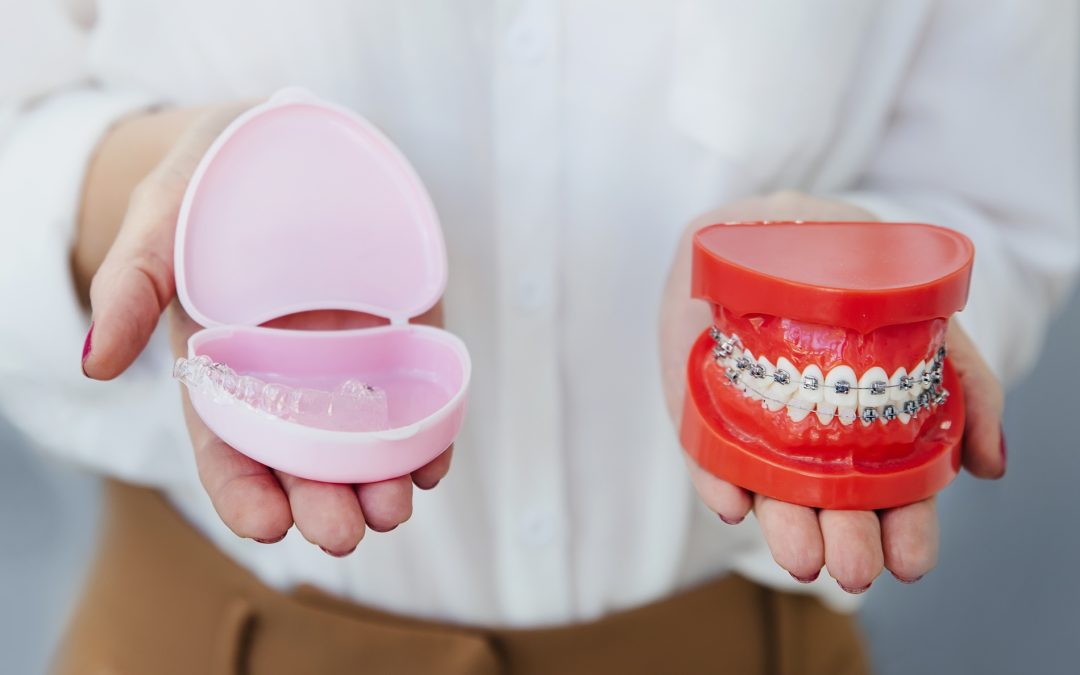Choosing between Invisalign and traditional braces can feel like a big decision, especially with so many factors to consider. Both treatments are designed to straighten your teeth and improve your bite, yet they cater to different needs, lifestyles, and goals. At Modern Orthodontics, our specialists help patients across Tribeca, Harlem, and the Bronx understand their options through advanced diagnostics, AI-guided treatment planning, and personalized care.
Whether you’re seeking a subtle, removable solution or a traditional approach for complex alignment, this guide will help you make an informed decision about which orthodontic treatment is best for you.
This Article Will Address
- What issues braces can fix that Invisalign can’t
- Which treatment works faster
- How to decide between Invisalign and traditional braces
- Key benefits of both options
- What to expect when starting orthodontic treatment in New York
Understanding Invisalign and Braces
Both Invisalign and braces are designed to move teeth into better alignment, but they use different technologies to do so.
Invisalign relies on a series of custom-made, clear aligner trays that gradually reposition your teeth. These trays are removable, comfortable, and nearly invisible, making them an appealing choice for adults and teens who value aesthetics and flexibility.
Traditional braces use brackets and wires to apply continuous pressure, guiding teeth into ideal positions. Braces come in several styles, including metal, ceramic, and lingual braces, each offering different benefits in terms of visibility and durability.
At Modern Orthodontics, our team combines 3D imaging and AI-assisted treatment planning to create precise, individualized treatment paths that enhance comfort, efficiency, and outcomes.
What Issues Can Braces Fix That Invisalign Can’t?
Invisalign has come a long way in treating a wide variety of alignment issues. In fact, for certain issues like an anterior open bite where the front teeth don’t touch, Invisalign is the treatment modality of choice!
Even complex skeletal issues like orthodontics in conjunction with jaw surgery can frequently be done with Invisalign aligners.
If you have a tooth that is deeply embedded in the gum, traditional braces remain the more effective choice. At Modern Orthodontics, we conduct comprehensive assessments to determine the most effective and efficient treatment plan for each patient’s unique needs.
Which Is Faster, Braces or Invisalign?
Treatment time depends on several factors, including the complexity of your case and your consistency with aligner wear.
On average:
- Braces take about 18 to 36 months, depending on the severity of your issue.
- Invisalign averages 12 to 18 months, depending on how closely you follow the 20–22 hours per day wear guideline
Braces work continuously, while Invisalign depends on patient compliance. Our orthodontists use digital tracking and AI-based simulation tools to monitor progress and make real-time adjustments for faster, more predictable results.
Comparison Table:
| Feature | Invisalign | Braces |
| Appearance | Nearly invisible | Visible (metal or ceramic) |
| Comfort | Smooth plastic trays | May cause minor irritation |
| Hygiene | Removable for cleaning | Requires special flossing tools |
| Treatment Time | 12–18 months (average) | 18–24 months (average) |
| Best For | Mild–moderate cases | Complex cases |
How Do I Decide Between Invisalign and Traditional Braces?
The right choice depends on your treatment goals, lifestyle, and level of commitment. Our team recommends considering:
- Case complexity: Braces may be necessary for complex bite or rotation issues.
- Lifestyle: Invisalign offers more flexibility for eating, photos, and events. It is also better for our patients who live farther away or are in college, since they have their aligners with them and require fewer office visits.
- Commitment: Aligners must be worn consistently to stay on track. Braces also require attention to avoiding certain foods and keeping the braces free of food debris and plaque.
- Budget and insurance: Coverage and payment plans vary by treatment type.
During your consultation at Modern Orthodontics, we’ll help you compare options based on comfort, cost, and expected outcomes, ensuring you choose the treatment that best aligns with your daily routine and goals.
What Are the Benefits of Braces and Invisalign?
Benefits of Invisalign
- Virtually invisible and discreet
- Removable for easy cleaning and eating
- Smooth plastic trays reduce irritation
- Fewer in-office visits due to digital monitoring
Benefits of Braces
- Ideal for complex orthodontic issues
- Reliable, always active treatment
- Multiple material options for appearance preferences
- Predictable outcomes without daily compliance concerns
No matter which option you choose, Modern Orthodontics provides expert guidance to ensure comfort, accuracy, and results you’ll love.
How Much Do Invisalign and Braces Cost in New York, NY?
The cost of orthodontic treatment in New York varies depending on the case’s complexity and duration.
- Invisalign: $2,500–$9,000
- Braces: $3,500–$9,000
At Modern Orthodontics, we make care accessible through flexible financing, insurance acceptance, and payment plans. Our team will walk you through every detail so there are no surprises, only results you can look forward to.
What Can I Expect During Orthodontic Treatment at Modern Orthodontics?
Your journey to a confident smile begins with a personalized consultation.
- Consultation and digital scan – We use advanced 3D imaging to assess your bite and create a tailored plan.
- Customized treatment – Your orthodontist will design your aligners or braces based on precise modeling and AI-assisted diagnostics.
- Regular check-ins – Patients receive consistent support and monitoring, with convenient scheduling across our Tribeca, Harlem, and Bronx offices.
Our modern offices and compassionate team create a calm, comfortable environment for patients of all ages.
FAQs About Invisalign and Braces in New York, NY
How long do I have to wear Invisalign each day?
Invisalign aligners should be worn 20–22 hours per day for best results, only removed for meals and brushing.
Are braces more painful than Invisalign?
Both treatments may cause temporary soreness after adjustments or tray changes, but discomfort usually fades within a few days.
Can adults get braces or Invisalign in New York?
Absolutely. Many of our patients are adults seeking improved function and aesthetics through discreet orthodontic options.
Does insurance cover Invisalign in NYC?
Many dental insurance plans provide partial coverage for Invisalign and braces. Our staff will verify your benefits and discuss financing options.
Why Choose Modern Orthodontics for Your Smile in New York, NY
At Modern Orthodontics, you’re treated by experienced orthodontists who combine Ivy League education, global training, and decades of clinical experience. Our commitment to precision, comfort, and personalized care sets us apart.
With three convenient locations in Tribeca, Harlem, and the Bronx, we make exceptional orthodontic care accessible to every New Yorker. Using 3D imaging and AI-guided treatment planning, we ensure your treatment is efficient, accurate, and tailored to you.
Ready to start your smile transformation?
Schedule your consultation today at Modern Orthodontics.
Book your appointment at one of our conveniently located offices in Tribeca, Harlem, or the Bronx and discover the confidence that comes with a perfectly aligned smile.
Sources

Dr. Maggie Romao
Born and raised in Brazil and a dual graduate of Columbia University (undergraduate and dental school), Dr. Romao completed her orthodontic specialty training at New York University in 2007. At Modern Orthodontics, she brings a warm, patient-centred approach to every smile transformation—drawing on her global background to connect with adults, teens and children alike. When she’s not helping patients achieve confident, healthy smiles, she enjoys life on the Upper West Side of New York with her three wonderful
Dr. Kenneth B. Cooperman
Dr. Cooperman earned his dental degree at Tufts University School of Dental Medicine in 1995 and went on to specialise in orthodontics at New York University in 2000. His career journey—from working with inmates in New Hampshire to his advanced training in multiple cities—reflects his commitment to precision, care and social responsibility. At Modern Orthodontics, he pairs technical expertise with a personable, transparent treatment style, ensuring each patient feels informed and supported. He lives on Manhattan’s Upper East Side with his family and their dogs, and brings that same sense of family-oriented care into the practice.

